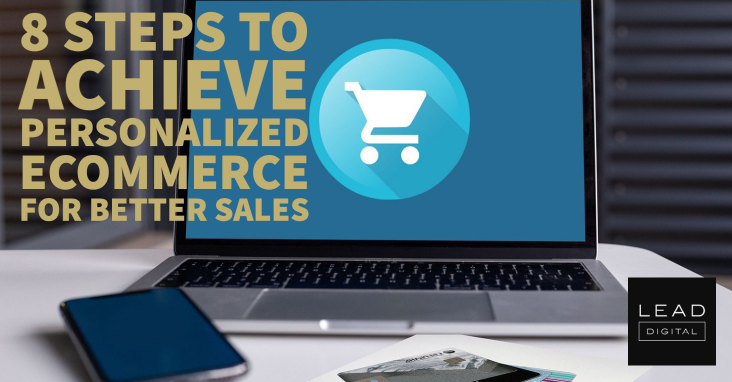
Customers have come to expect personalization when they’re shopping online. They’re starting to see this as a standard service and appreciate receiving special, tailored offers.
Ecommerce personalization enables you to treat every customer like a VIP. And when customers feel like VIPs they’re more likely to stay loyal to your brand.
Ways to keep customers happy include providing them with a seamless customer service experience. For example, implementing VoIP technology is a great way to handle incoming calls. Other ways to keep satisfaction levels high include offering a customized shopping experience like no other.
Follow these eight steps to create a winning website personalization strategy.
1. Encourage customers to create accounts
In order to build a customer profile (or buyer persona) you need to gather data from your existing subscribers and buyers. One good source of data is the information that’s input when a customer signs up to buy or subscribe to your newsletter. When you have amassed enough data you can dig through it to identify common traits that many of your customers have. Such as, if they are in specific age groups or genders. Then you can use this information to help you create an ideal customer profile and targeted campaigns for people in those demographics.
Having customer profiles will help you implement personalization strategies. It will help you monitor your customers’ behaviors (This is something that customers are generally happy[1] for you to do, so long as it leads to them having an improved shopping experience).
Once you can identify customers by their profiles, you’ll be able to offer them products or information that may be of interest to them.
When you ask people to create accounts, make it easy for them to do so by adding a checkbox at the checkout that nudges the customers to add their details.
2. Segment email subscribers
You can segment your email lists by geographic data, demographic data, psychographic data (lifestyle, activities, etc.), and behavioral data (based on purchases, browsing behaviors, etc.)
Once you’ve segmented your lists you can make sure you send appropriate content, for instance, based on a customer’s location. Say you’re promoting a ‘winter sale’. You only want to send out emails to subscribers in locations that are currently, or are soon going to be, wintry.
Pair your email campaign with a landing page to boost conversion rates. Send subscribers an email that reflects their purchasing history – along with a link to a landing page that tells them more about those products or services. Linking them to a specific landing page (rather than the generic homepage) increases the likelihood of them taking action.
Personalize email subject lines to include subscribers’ first names and send out celebratory birthday emails with special money off vouchers.
Other ways of personalizing include sending emails inviting customers to leave their opinions. These business review examples can give you an opportunity to reply personally to subscribers who love your brand as well as respond to criticisms.
3. Create personalized homepages
Homepages are your online store’s front door. So apart from making sure, your landing page is optimized, make sure you give customers a warm personalized welcome based on their purchases or browsing history. By using tracking cookies you can see which pages a previous user has visited and present them offers that might be relevant to them.
If, for example, someone has previously visited a blog on ‘how to start an ecommerce business’, next time they visit you could invite them to download an eBook on order management systems.
Or, for instance, if someone has previously browsed the ‘15% off boots section’ on the ‘women’s sale’ page you can show them ‘new women’s boots just-in’’ on the homepage next time they browse your site.
4. Provide personalized online store assistance
Invite customers to participate in quick quizzes around the size or style of items they’re looking to buy. By storing the results, you can personalize product suggestions. If you’re a fashion e-retailer you could provide personalized wardrobe suggestions that fit budgets, sizes, and tastes.
Having this information also opens up further marketing opportunities in terms of email updates about new products that might fit the bill. If, for example, a customer has expressed an interest in creating sales literature for their website, you could send them an email inviting them to use your online digital brochure maker. – Read more



